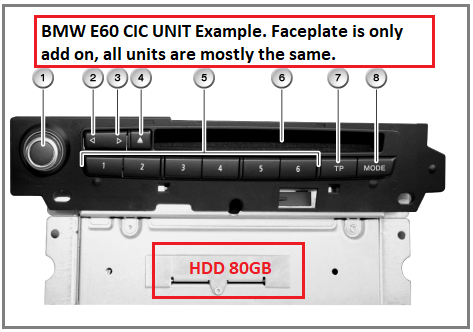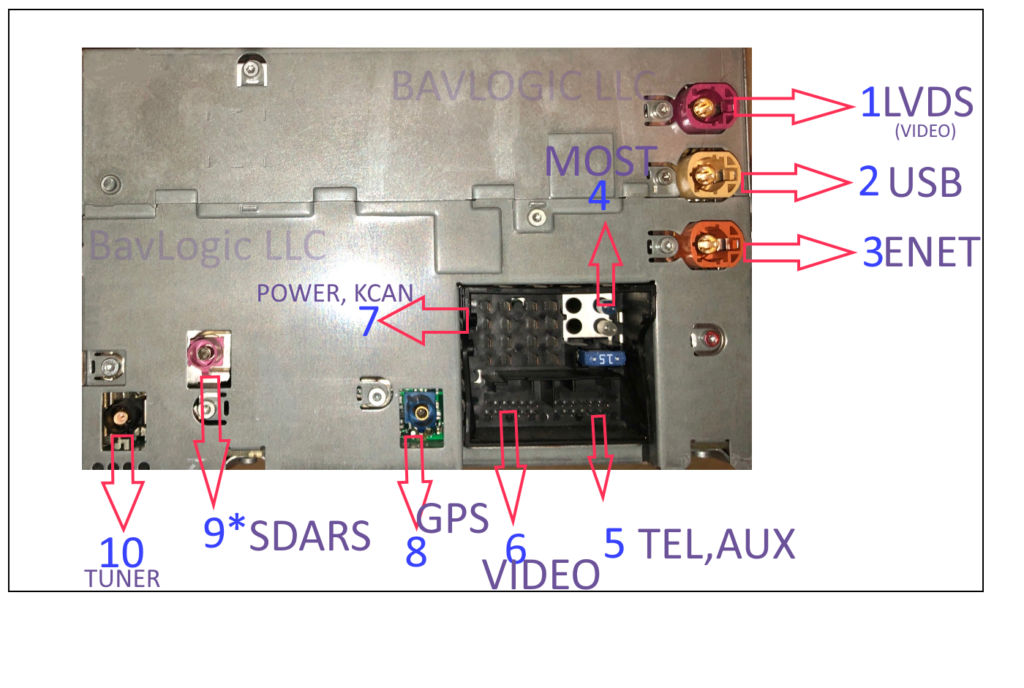Car Information Computer. MAIN INFO AND REPAIR SERVICE. 2009-2012 ANY BMW CARS WITH NAVI 609 option or retrofitted ones.
In this article we are going to talk about very popular BMW CIC unit repair and main problems, sorry it will be deep and complex like always:). It took us a while to create working solution to repair these SUPER COMPLEX UNITS, where EVERYTHING CAN GO BAD, unlike older CCC units where 90% units have standard issues we know about pretty well. On top of that BMW themselves realized it is a good business selling these units after warranty is gone. Yes they want it to fail and I will prove it later in this article. So finally, since we know probably 70% of CIC failures, we decided to create a separate article about it, and believe me it was very hard, you will notice nobody in the USA and only few places in the world offer this repair service, and only 2-3 places in the world offer serious deep repair, because a lot of “repair shops” simply buy used units and reprogram them for a huge profit hoping it will last 6 months!!! No wonder used cic unit reprogramming fee is around 500$+ at some shops, yes they will charge you 500$ just to program CIC unit properly with all FSC loaded and activated. Only few years ago i thought it was very reliable marvel from BMW&HarmanKardon&Alpine corporation, it honestly was but they don’t want it to last 10 years, so we are here to help.
SO LETS START, IT WILL BE DEEP LIKE ALWAYS!
Car Information Computer or CIC
The Car Information Computer (CIC) is an enhancement of the Car Communication Computer (CCC). The Car Information Computer will be deployed for the first time as of 03/2008 in a special model-series in the E60 and E61. Later, the CIC will also be used in the other model-series E90/60/70/93/92/61 etc all F series F10/F07/F30/f02 etc.
The Car Information Computer is the headunit in the MOST network.
The essential new features for the CIC are:
-
Extended functions for existing systems, e.g. navigation (see also Owner’s Handbook)
-
Additional functions, e.g. central database for address data
-
Additional hardware, e.g. hard disk (80 GB) or USB port
-
Changed hardware e.g.:
-
LVDS data line to the Central Information Display (CID) as two-wire connection
-
1 Drive for DVD and CD
-
-
Changed display and operating concept for control centre via:
-
New layout of the user interface on the CID
-
New controller with 7 fixed selector keys
-
-
Reduction of the virtual control units in the CIC
Changes to the software and hardware have extended the diagnosis for the Car Information Computer accordingly.
Brief component description
The following components are described:
-
Car Information Computer
-
Central Information Display with LVDS interface
-
Controller
-
USB connection
The Car Information Computer (CIC) has 6 free programmable favourite buttons.

| Item | Explanation | Item | Explanation |
|---|---|---|---|
| 1 | Rotary push-button | 2 | Seek tuning button, backwards |
| 3 | Seek tuning button, forwards | 4 | Eject button for DVD and CD |
| 5 | Favourite buttons | 6 | Drive for DVD and CD |
| 7 | Button for traffic announcements (TP = Traffic Programme) | 8 | MODE button (changeover of audio source) |
In principle, the structure of the CIC corresponds to that of a personal computer. In a similar way to a PC, the CIC contains:
- Processor
- Working memory
- Hard disk
- Fan
The extended functions means that the plug connections on the back of the Car Information Computers have also changed.The number of plug connections depends on the optional extras involved: e.g. DAB.

Navigation computer, GPS receiver as well as yaw rate sensor
The GPS receiver receives e.g. the following data from the GPS aerial:date, time and locations of the GPS satellites. The navigation system uses the data from the GPS receiver to calculate the vehicle position.
The yaw sensor delivers the data regarding a change in driving direction. This data is required for a more accurate location determination, as satellite signals cannot be received everywhere (e.g. tunnels, underground vehicle parks).
Three-way tuner: FM, AM and TMC
DAB tuner
Audio system controller and stereo amplifier
Gateway between MOST and CAN
Central Information Computer with LVDS interface
The dimensions of the Central Information Display (CID) have not changed (8.3 inches). However, the resolution is 1280 x 480 pixels. This increases the contrast and improves legibility.
The display and operating concept for control centre has changed. Selection in the main menu is arranged in linear form in lists (no longer star-shaped). The submenus are also placed horizontally one above the other.
With introduction of the Car Information Computer, the LVDS data line is a two-wire connection. This new LVDS data line has the following advantages:
Higher data transfer rate
No difference in the signal propagation delay between the individual lines
Simpler and lower-cost technology
A four‐wire, screened cable is used for the two-wire connection. This solution involves lower costs, even though one of the 4 lines is not used actively.
| 1. | |
| 2. |
